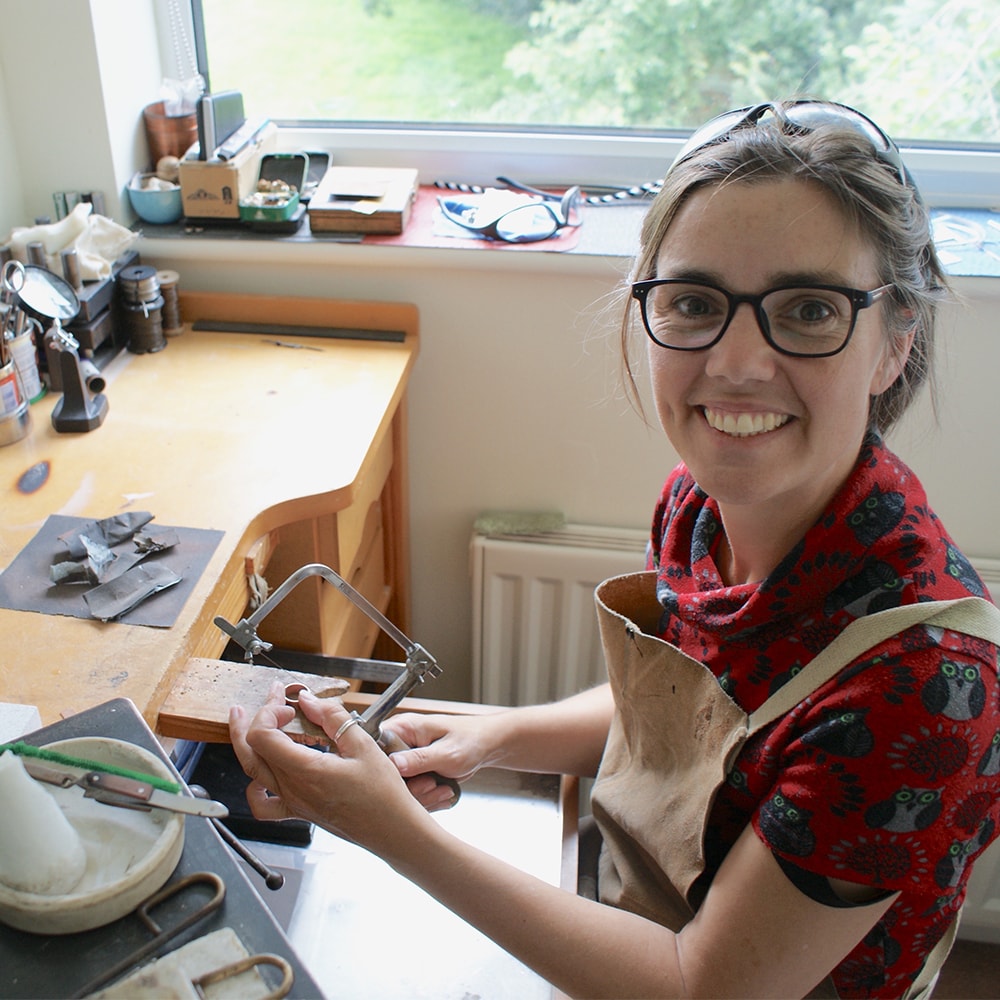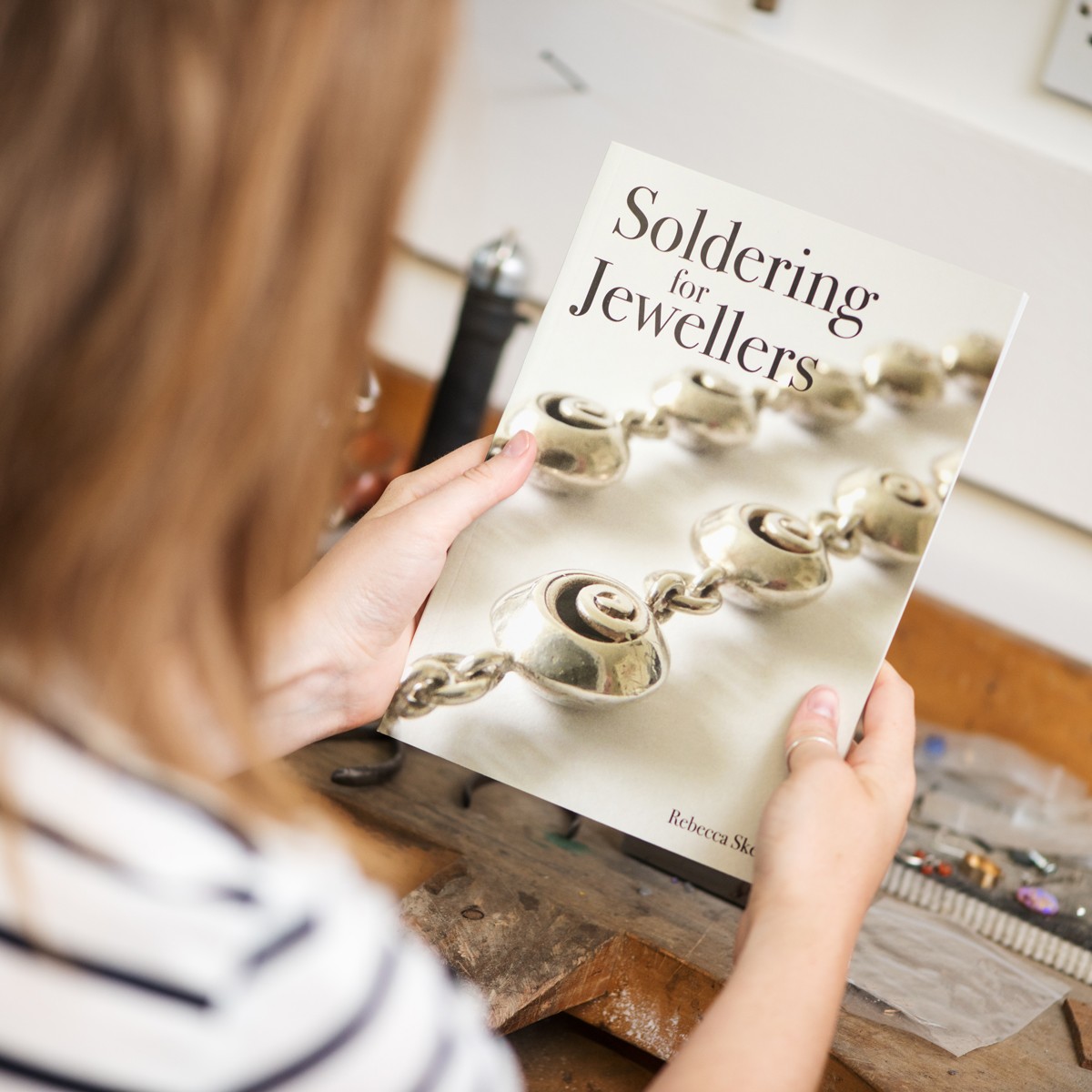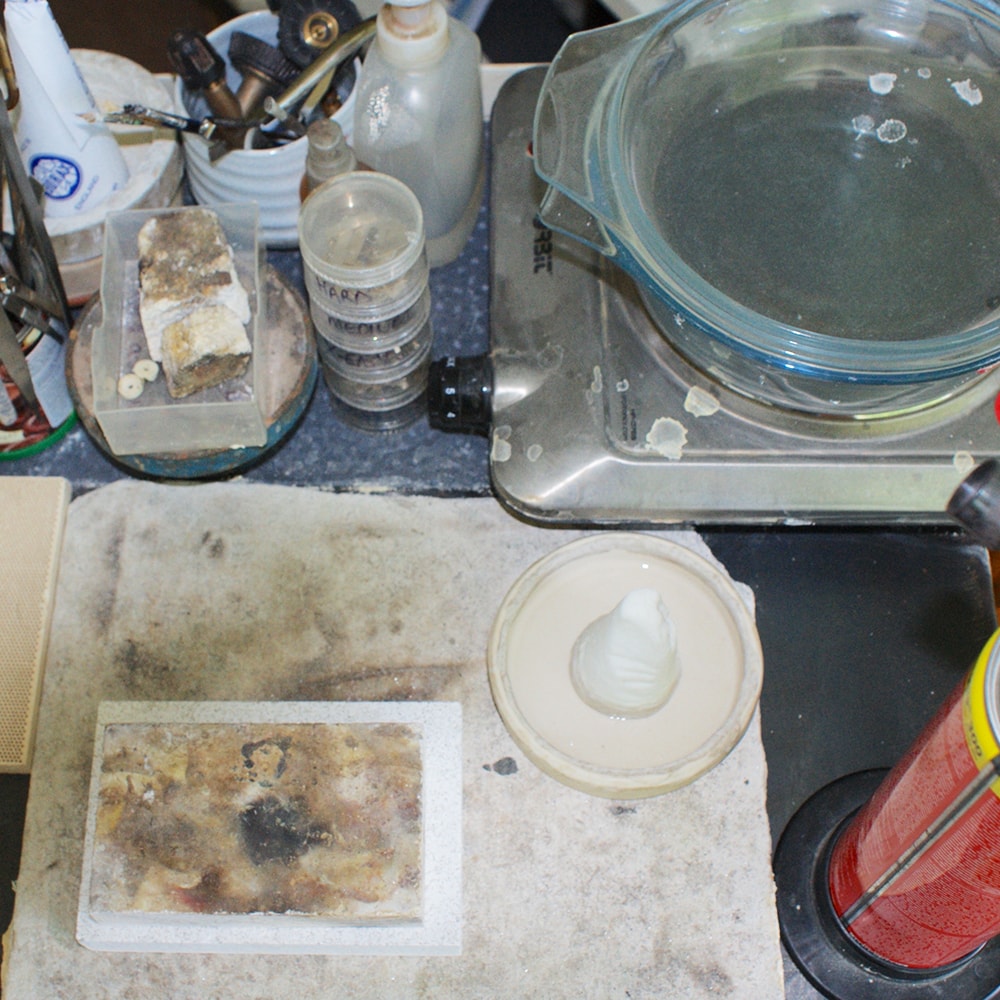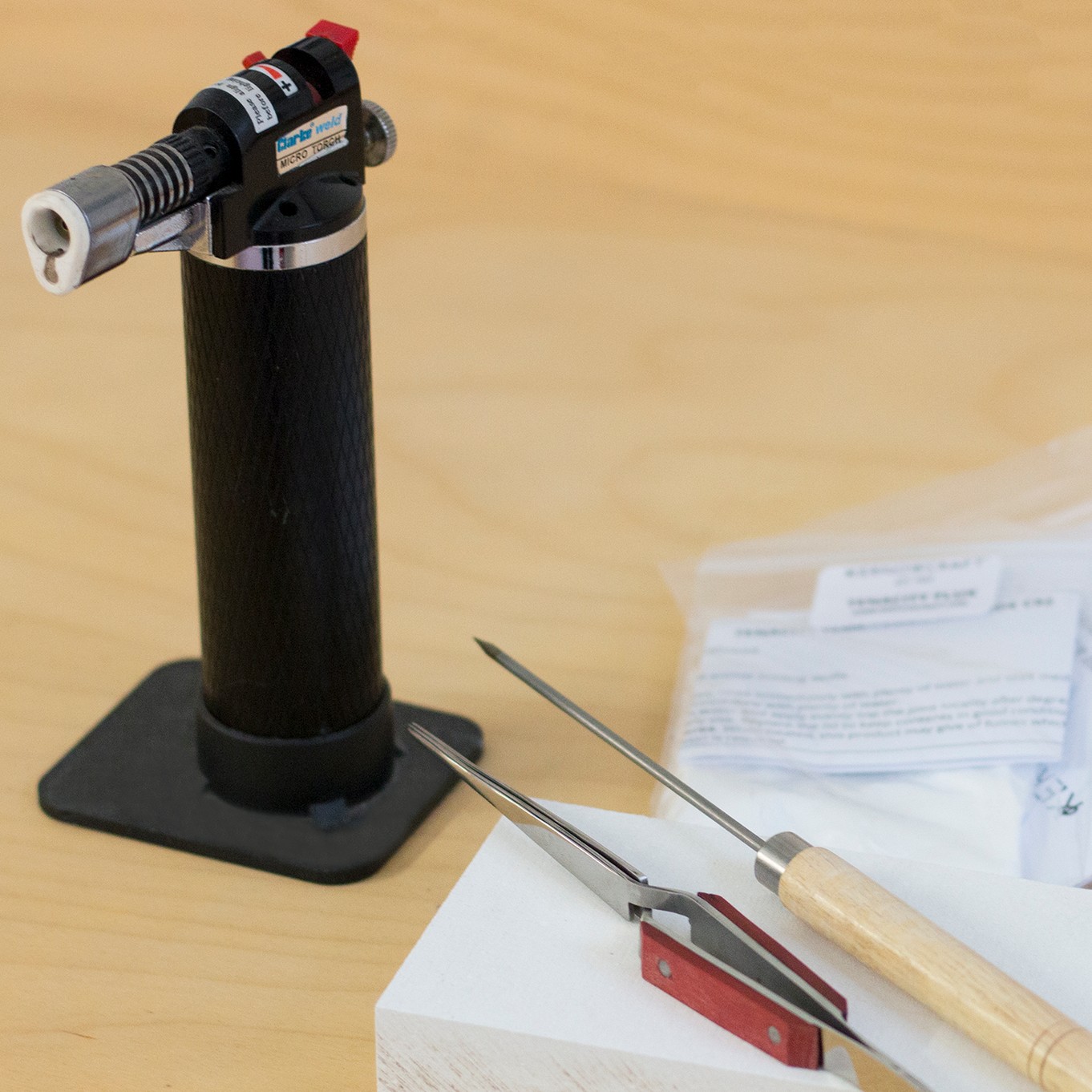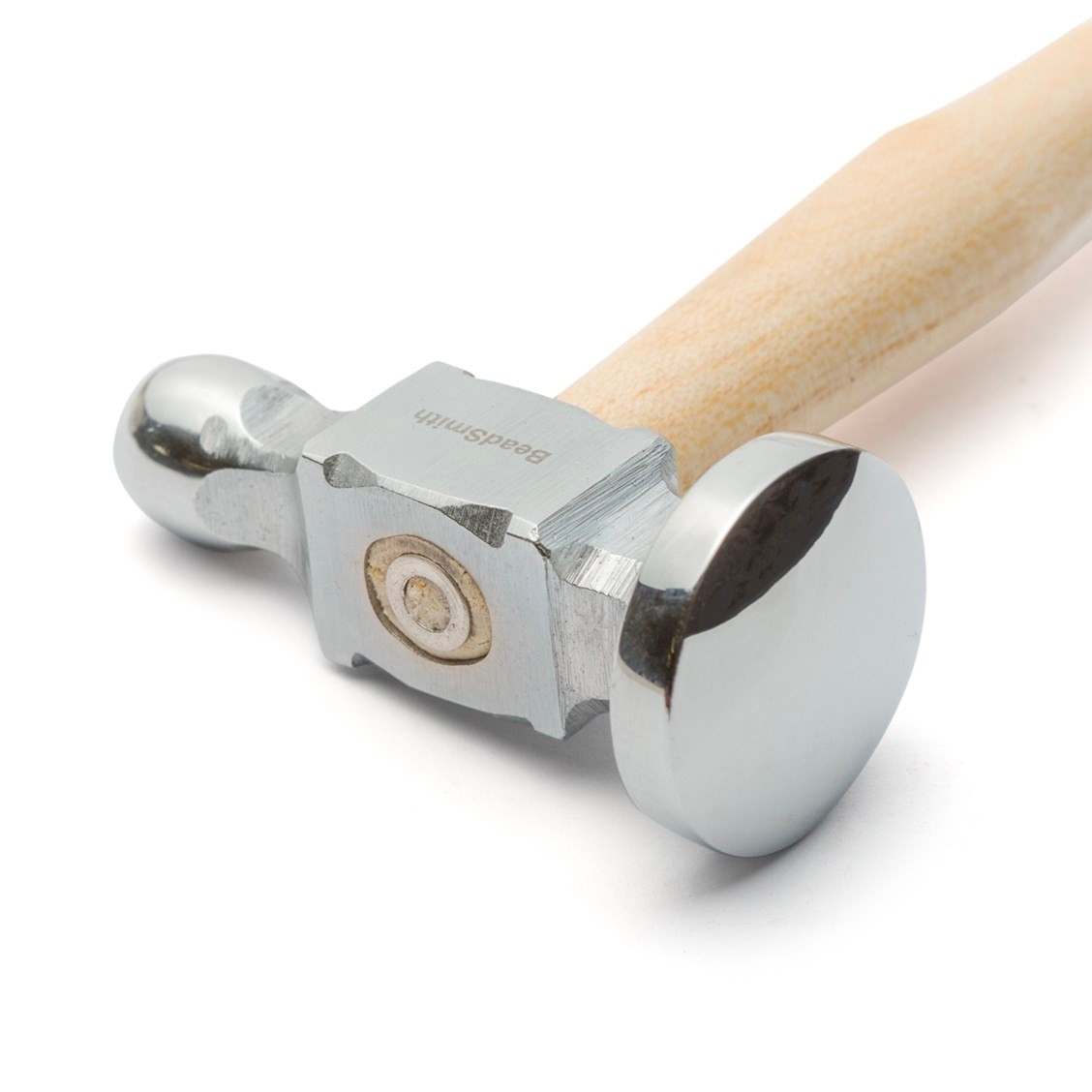Meet The Jeweller & Author Of 'Soldering For Jewellers' Rebecca Skeels
We're back with another Meet The Jeweller interview!
Today we're chatting to Rebecca Skeels, an experienced jeweller and the author of Soldering For Jewellers - a customer favourite!
As an educator, we ask Rebecca about her advice on studying jewellery making, soldering tips and her favourite tools and materials to work with.
Read about Rebecca's jewellery making journey, her beautiful bird inspired rings and pins and scroll down to the bottom of the page to discover what tools Rebecca recommends to get started with soldering.
Read our review of Rebecca's Soldering For Jewellers Book here
Our customers love your book Soldering For Jewellers, what was the inspiration behind this?
I am always looking for new ways to share information and knowledge to others and when an opportunity to write a book for Crowood Publishers came up I took the opportunity.
Soldering is one of the techniques taught early on in basic jewellery skills and can cause many frustrations and problems. Like the other processes in jewellery, it is a process that includes a variety of options to choose from depending on the required outcome.
The book has given me the opportunity to lay out a variety of projects showing soldering options in as simple a way as possible to allow people to pick and choose the one that suits them and their design idea. It will allow those that have not done any soldering before to use it to learn some of the basic techniques, but also those who have done some jewellery to expand on what they already know and allow them to explore and push their designs further.
Hi Rebecca, tell us about yourself and how your jewellery making journey started!
When I was a lot younger, I started to make small beaded and polymer clay items for friends and family. But didn’t really consider making jewellery as a career until I undertook an Ordinary National Diploma in Art and Design at the Isle College in Wisbech where I started to make jewellery and other items in metals and other materials.
I started my business in 1994 after graduating from the University of Wales where I studied Three Dimensional Design specialising in Wood and Metals.
Since October 1994, I have been the sole proprietor of SKEELS, a developing jewellery and product design company. This has allowed me to work on commissions as well as my own collections, ranging from unique handmade cufflinks, pendants and furniture to installations in public spaces. My work is exhibited through galleries, shops, craft shows and trade exhibitions in the UK and abroad.
I continually expand collections with research and experimentation, taking opportunity of new, developing and different materials and technologies. Research also takes place to develop new methods in which jewellery and metalwork is taught, widening the knowledge of the jewellery and metalwork industry, techniques and processes.
Since 1994, my thirst for knowledge and passion for sharing has led me to graduate from Central Saint Martin’s (MA Project by Design) and achieve a PGC in Higher Education from the University for Creative Arts and I am now also a Senior Fellow of the Higher Education Academy.
If you could give one tip on soldering, what would it be?
A nice simple tip for soldering, but saves so many problems and work, is remember to paint correction fluid on areas you do not want your solder to flow. This is especially useful when soldering hinges, chains and textured parts together.
What has been the most rewarding part of being a tutor and teaching the next generation of jewellers?
There are actually so many rewards in teaching the next generation of jewellers, from seeing how everyone can pick up some processes quite quickly and start to produce wearable items. It is also rewarding to discuss options and ideas with students who then go away and develop their initial ideas into really exciting and unique pieces, plus seeing students graduate and work hard developing their professional practices into something really excellent and sustainable that they enjoy.
What advice would you give to anyone thinking of studying an area of jewellery making?
Everyone that wishes to study jewellery needs to put in the time and efforts to practice their skills and have a balance of idea generation, design, development, making and promotional activities. All of these can be really enjoyable and fun, enthusiasm grows as work and practice develops.
As a personal style emerges, it is important to find where they fit as a practitioner and who their target audience is, this will make it easier to promote and show those that are really interested in their styles and type of jewellery.
What’s your favourite material to work with and why?
I love to combine a variety of materials with silver. Silver is so adaptable to a huge variety of possibilities, from working in a range of scales, producing various forms and shapes as well as taking on numerous textures and surface finishes.
Where do you see the jewellery making world in ten years?
Jewellery has grown and seems to keep growing with each decade. We can now design and make work for collection, wearable and non-wearable, use a huge range of materials as well as use an endless choice of processes and use it to communicate ideas, concerns, comfort and happiness as well as contain, decorate, interact and enjoy.
In another ten years we will likely have more processes and materials to add to our toolboxes and there will be more people enjoying making work as a hobby, running small sustainable practices to running and working in larger businesses.
Jewellery is incredibly versatile and there is something for everyone in making as well as wearing. There will be development of current and new courses as well as more books and publications to help us all keep learning about the theories, processes, designing and making of jewellery.
What’s your favourite area of jewellery making and why?
My favourite area of jewellery making is the exploration and experimentation. We can explore and push boundaries or experiment where and how work is worn, what materials can be used and combined, what processes can be pushed and even how our work creates conversations, interactions, debates and comfort.
What’s one area of jewellery making you’d like to master?
Luckily in jewellery there is always something to develop, and I am not sure any maker, artist or craftsperson ever feels they have fully mastered anything as goals and aims change as they develop. At the moment, I would like to develop my skills in forming metal, as I like to raise, forge and shape metal and would like to do more of this in my work.
What advice would you give to a jeweller, wishing to exhibit their work in the future?
The main aim with any business is to enjoy what you are doing and embrace those elements that you don’t quite understand or have passion for. Find a way of exhibiting that suits you, for example if you prefer not to be front facing to the public there are ways to exhibit through galleries and touring shows that you may prefer. There are online, touring, pop up, trade and retail exhibitions, galleries and shows.
Do your research and see who else is exhibiting, what the price range is of work selling, who buys there and where does the work end up.
If you have exhibited in a show or gallery and have not sold work, do reflect on it carefully, ask yourself questions about the event or place as a whole, for example does your ideal customer buy there? Do exhibitors need to show more than once before the customers buy? Does the venue suite you and your work?
Try to be experimental, jewellery can be versatile and there are many ways of showing it to the right customer, consider where and when you are showing it and how you are displaying and talking about it.
What’s the best piece of advice you’ve ever been given?
Keep asking questions and the best question is “why?”. It helps you discover what you would like to do rather than worry about what you think others want you to do or what you think you should do.
Describe your jewellery in 3 words!
Unique, handmade and fun.
How do you continue to learn new methods, technologies and techniques in jewellery making?
I love learning and developing, and sometimes it is hard to allow the time. To help I enrol on courses and programmes which automatically puts the time slot in the diary, whilst other times I learn through playing and experimenting. Most of the time I need to start something, then read about it, then play and try it out and then read about it some more. Then eventually I will discuss it with others. It takes time and a variety of learning methods with mostly combining playing and doing so I can understand what is being told, shown and discussed with me. It is a nice way of learning, I think everyone needs to find what works for them and try and ensure that they allow time in their schedules.
What’s one tool you just couldn’t live without!
That’s the hardest question as there are a few, sketchbook and pen, saw and pliers, nail buffer and polish cloth and now my reading spectacles too. My favourite at the moment is an old small measuring gauge, but it’s more for the look and size of it rather than the use.
Can we expect another jewellery making book to come our way soon?!
Nothing coming soon as I am not working on one, but I am open to ideas from those that liked the soldering book. It would be good to hear what they liked about it and what they would like to learn next.
We love your bird inspired rings and pins, what was the inspiration behind these?
My previous work hadn’t combined much humour, so I wanted to design something that had some fun. I also wanted to find a way of displaying them instead of keeping them in a box or drawer.
Designing started with crows as I like watching them out of the window and on my journey to work, each one having its own character in either the over exaggerated way it moved or way it looked as if it had been up to something.
When designing, I eliminated elements I didn’t like and exaggerated bits that made me smile, such as the textures and way the birds hung out together. Through development I added other elements of crows that I thought should exist, such as taller ones and spikey ones. The legs became the stands although they can also be displayed without them.
Later I started to add other birds that made me smile, such as the ducks and chickens. I like this range of work as I feel I could keep developing it, using various materials and processes.
Where can you find Rebecca?
Website - Facebook - Twitter
What are your Kernowcraft top picks?
Kernowcraft’s delivery is particularly speedy, so if you want to get started with your soldering soon check out the borax, borax dish, soldering block, steel and plastic tweezers, GoSystem tech torch, wet and dry papers, safety pickle, metal and solder. All you need to get started along with the Soldering For Jewellers should come to under £85.
The nice thing about jewellery is that you can build up your tools and gadgets slowly over time, adding to your toolbox as you develop your skills or find you are using particular processes more than others.
Some tools are really reasonably priced too and so easy to add to your wish lists for Santa to buy!
Shop Soldering Kit
This customisable kit contains all the tools and supplies you need for soldering. Perfect if you're a complete beginner, wanting to grow your tool kit.
GoSystem Tech Torch
The GoSystem tech torch is pretty versatile, and it is great to get started especially if you are working at home or taking your tools from place to place.
Repousse/Chasing Hammer
And lastly the Chasing and Repousse Hammer, this is a great price, does the job required and I have this very one.
Also in this section:
- Chatting To Silver Clay Tutor Emma Roy From Silver Clay Academy
- Chatting To Truro College Exhibition Winner, Caitlin Haughton
- Mixed metals, textures and being inspired by outdoors with Lucy Spink Jewellery
- Magical Metal Clay, Love of Nature and Gems With Beaded Magpie
- Talking Wax Carving, Texturing & Otherwordly Jewellery With Zoë From Brother Banquo And Queen
- Talking Gold And Sand Casting With Billie Ellen Designs
- Meet The Jeweller: Talking Opal Obsession with Jenny from Sea Surf Rocks
- Chatting To Truro College Exhibition Silversmith Winner, Olivia English
- Day In The Life Of Cornish Eco Jeweller Sarah Drew Jewellery
- Wax Carving, Metal Clay & Coastal Designs With Rockpool Jewellery
- Colourful Jewels, Cornish Inspiration & Ring Love With Marsha Drew
- Chatting Unique Nature Inspired Designs & Intricate Sawing With HISO
- Anxiety Jewellery & Favourite Gems With Rozen Jewellery
- Day In The Life Of A Jeweller With Gretel's Metals
- Sea Glass, Healing Gemstones & Cornish Coastal Inspiration With Ula Jewellery
- ‘A Heart of Gold’ Jewellery Collaboration, Raising Awareness of Heart Disease in Women
- Stone Setting, Diamonds & Jewellery Design With Goldsmith Sonia Cheadle
- Magical Metal Clay, Nature & Gems With Susan Studd
- Chatting To Truro College Exhibition Silversmith Winner, Esther Moore
- Handmade Jewellery Inspired By Japanese Heritage & Philosophy With Kumiko
- Creating Unique Jewellery Collections With Gem Lark Jewellery
- Crystal Jewellery With Jessica From 'Roses & Whiskey'
- Statement Crystal Jewellery With FIRENZA
- Electroplating & Crystals With Studio Roan
- Chatting Beading & Wirework With Author & Tutor Sara Withers
- A Day In The Life With Soul Purpose Jewellery
- Meet Jeweller, Tutor & Author Anastasia Young
- A Day In The Life Of A Jeweller With Basia From Stardust Mine Jewellery
- Meet The Jeweller, Author & Tutor Jinks McGrath
- Meet The Maker Transforming Coins & Scrap Metal Into Fun Characters
- Behind the Scenes At The Jewellers Retreat - An Interview With Jessica Rose
- Combining Skills Of Illustration & Metalsmithing With The Sylvan Smith
- Magical & Whimsical Jewellery With Manom Jewellery
- How To Work With Gemstones As A Jeweller With Gemmologist Sally Spencer
- Sea Glass, Personalisation & Christian Jewellery With Jordan Lily
- Chatting Beads, Etsy & Social Media With Emma From Evren Blue
- Garden Studio Tour, Jewellery Making & Packaging With Little Black Cat Jewellery
- Jewellery Inspired By Cornwall, Magic & Myth With Gemheaven Jewellery
- Sand Casting Silver Cockle Shells & Nature Inspired Jewellery With Anna Davenport
- Day In The Life Of Running A Sea Glass Jewellery Business With Created By Niki
- Leo + Elk On Running A Family Business During A Pandemic
- A Day In The Life Of A Jeweller: Finding Normality Again With Kim Thomson
- Gemstone, Body Positivity & Black Lives Matter Designs With 'Jewellery By Eilatan'
- Meet The 'All That Glitters' Contestants Of Series 1
- Briolette Jewellery, Etsy & Learning With Ocean & Earth Jewellery
- What's Inside A Travelling Jeweller's Briefcase?
- Combining Sea Glass & Diamonds With Glasswing Jewellery
- Bohemian Luxe Handmade Jewellery With 'Feathers And Wings'
- Diamonds & Granulation With Milly Maunder
- Then & Now, Jewellery Through The Ages With Sam Stirrat
- Contemporary Engagement Rings With William White
- Designing An Engagement Ring With Guest Writer Sea Surf Rocks
- Meet The Jeweller & Author Of 'Soldering For Jewellers' Rebecca Skeels
- Jewellery Making Notebook Tour With Jasmine Butler
- Running A Handmade Jewellery Business During A Pandemic With 'Louy Magroos'
- Home Jewellery Studio Tour & Top Tips With Jodie Fern
- Let's Talk Business With Jeweller & Tutor, Karen Young
- Nature & Mental Health Jewellery With Lost Kove
- Meet The Jeweller Behind Hazey Designs
- Jewellery Making Storage Tour With Scruffy Dog Silver
- Meet The Beader Behind Dainty Rocks
- Jewellery Workshop Tour With Little Silver Star
- Mindful Gemstone Jewellery With The Sea Tree Company
- Let's Talk Sea Glass Jewellery With Sadie Jewellery
- Chatting Beads & Growing A Jewellery Business With Liz Lloyd
- Beading With Carolyn Anne Jewellery
- Jewellers Of Colour: Connecting BAME Jewellers In The Jewellery Industry
- Meet The Self-Taught Jeweller Behind Corzana
- Meet The Jeweller Behind The Messy Creative
- Handmade Button Jewellery With Crafty Little Koala
- Beautiful Gemstones For Beautiful Skin With Inlight Beauty
- Meet The Boho Jeweller Behind Moonsalt Jewellery
- Etsy Success & Personalisation With Little Homebird Jewellery
- How Jewellery Making Has Helped My Chronic Illness & Mental Health
- Jewellery Making With Nature's Treasures
- Meet Illustrator & Polymer Clay Jeweller, Nyassa Hinde
- Jewellery Trade Secrets With Metalsmith Society
- Sea Glass Jewellery & Launching A Business With Love Kernow
- Meet The Jeweller Behind London Jewellery School & Jewellers Academy
- Meet Stephen Goldsmith, Author Of Polishing & Finishing For Jewellers
- Resin, Flower & Gemstone Jewellery With Ellanor Aquitaine
- Meet The Jeweller Behind Trinkets By Moonlight
- Meet The Self-Taught Jeweller Behind Olivia Street Silver
- Personalised Handmade Jewellery With Ruby & Wonder
- Meet The Cosmic Jeweller, Vikki Hall
- Meet The Eco-Friendly Jeweller, Jemima Hurlock
- Meet The Cornish Jeweller, Thomas Matthews
- Beachcombing & Jewellery Making With Cornish Agates
- Festival & Boho Jewellery With Tegen
- Mokume Gane & Vessel Pendants With Nicola Bottono
- Meet The Jeweller Behind View Of The Sea
- Artists Residency With Jeweller, Jonathan Videgrain
- Meet The Jeweller & Gemstone Addict Behind Made By Oonagh
- Pre-Loved, Vintage Jewellery With Ella Masters
- Baker's Dozen Exhibition With Sarah Shelton-Palmer
- Meet The Jeweller, Tansy Wilson
- Celestial, Boho & Witchy Jewellery With Amber Wheatley Designs
- Let's Talk Metal Clay With Lisa Cain
- Meet The Jeweller Behind When Caitie Met Soda
- Make It Challenge: Recycling The Same Piece Of Silver For 100 Days
- Bespoke Engagement Rings With Blackacre
- Meet The Jeweller Behind Claire Howard Jewellery
- Meet The Jeweller Behind Award Winner Andrew Berry
- Meet The Nature Inspired Jeweller Behind Lima-Lima
- Creating An Opal Ring & Pendant With Little Joy Jewellery
- Jewellery Inspired By Your Home With Claire Halligan
- Award Winner Monique On Techniques & Cornish Inspiration
- Meet The Jeweller Jonathan Videgrain
- Meet The Jeweller Louella Jewellery
- Meet The Jeweller Behind Bijoux De Chagall
- Alternative Wedding Jewellery With Bloody Mary Metal
- Jeweller Chloe Michell Talks Working With Metal Clay, Tools and Inspiration
- Setting Up Your Work Bench With Jeweller Victoria Walker
- An Interview With NAJ Shortlisted Designer of the Year Sheila Kerr

